If you’ve opened a piece of music or looked through your children’s music, you’ve probably noticed some numbers at the beginning of the piece. They look like this:
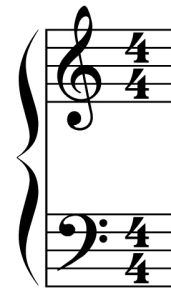
The top number tells you how many beats are in each measure in your piece.
(Measures are simply the way music is divided up into a rhythmic pattern). So, a four on the top, as seen in the time signature above, means you’ll count like this: 1-2-3-4, 1-2-3-4, 1-2-3-4 throughout your song.
If I change the top number, you can probably figure out how you’ll be counting throughout the song.
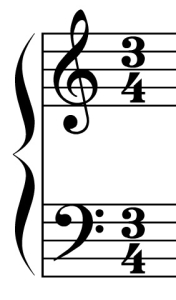
Take a guess. Give it a try. Really. Did you try it?
If you guessed 1-2-3, 1-2-3, 1-2-3, you’re right! If you guess something else, contact me and we can talk it through!
Ok, so top numbers are easy. And, the good news is, bottom numbers are just slightly more complicated. But, they’re just complicated enough that it’s not unusual for me to get the question
What does the bottom number in a time signature mean?
The bottom number indicates which type of note is getting the beat.
Here’s a cheat sheet:
4 = Quarter Note
2 = Half Note
8 = Eighth Note
(note: You probably will never have a time signature with any other number on the bottom. So, if you memorize the cheat sheet above, you’ll be well covered.)
Here’s a little bit more explanation on how the numbers work together:
If your time signature is 4/4, you can fit 4 quarter notes into one measure. So, when you say 1-2-3-4, each of those numbers (beats) will be a quarter note.
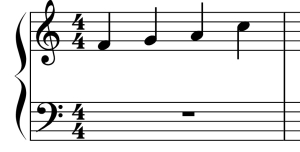
Similarly, if your time signature is 3/4, you can fit 3 quarter notes into one measure.
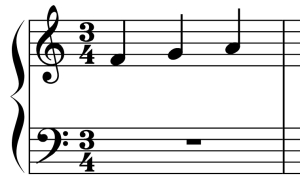
If your time signature is 6/8, you can fit 6 eighth notes into one measure. You’ll count 1-2-3-4-5-6 and each of those beats will be an eighth note.
It looks like this:
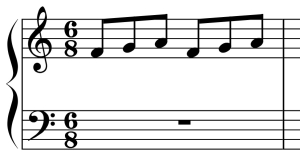
You may also see a 2/2 time signature. In this case, two half notes fit into every measure – 1-2, 1-2, 1-2.
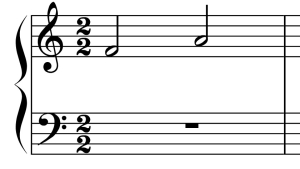 You may (correctly) figure out that it looks alot like a 4/4 time signature. The differences are subtle and nuanced, so I’m not going to take the time to write them all out here. If you just have to know about those nuances, contact me and we can talk about it specifically.
You may (correctly) figure out that it looks alot like a 4/4 time signature. The differences are subtle and nuanced, so I’m not going to take the time to write them all out here. If you just have to know about those nuances, contact me and we can talk about it specifically.

This has been such a confusing topic for me and I have yet to find an explanation that helps. Your page was perfect and I have bookmarked it for future reference. Thank you so much for your help!
Could you please explain to me about the bottom number of the time signature? I know that the top means how many beats per measure, but I do not know what it means about the kinds of note of getting one beat. I am confused about the one beat in the bottom number of the time signature. Thank you for your time to reply.
Hi George ! I have the same issue too . Did you get a response to your question ? Perhaps you can share with me then. Thank you.
Hi, Avana,
I never received a reply. I can say this to you. I learned that the bottom number tells us the note value, or the length of each beat. Understanding musical theory can be confusing.
I’m still a slight but confused on 2/4 as I’ve been set some theory but this website has helped with other questions. Thx
Actually my problem is setting the metronome… I know all those numbers must mean something…. but what?
Hi Lawrence – metronome numbers are the number of beats per minute. Small numbers mean fewer beats per minute (a slower tempo) and big numbers mean more beats per minute (a faster tempo). The metronome is a tool to help you keep a steady tempo. You can use the numbers as a general guideline to know how fast something is intended to be played or sung.